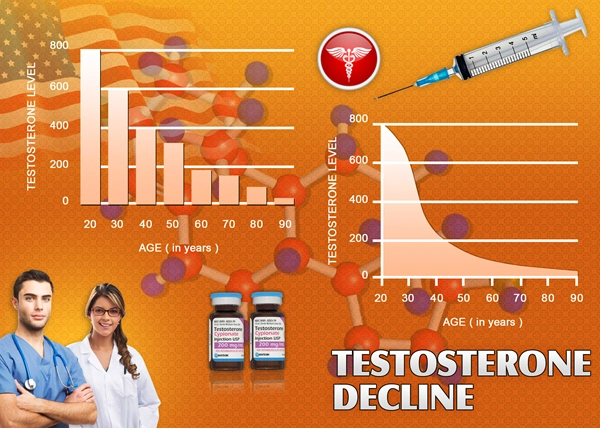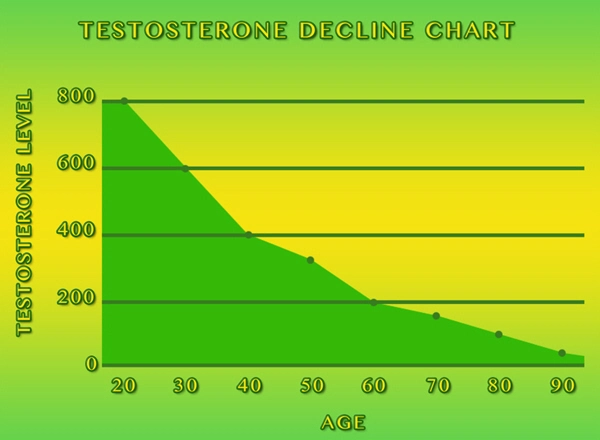Introduction
Type 2 diabetes mellitus represents a significant health challenge globally, with a particularly high prevalence among American males. Effective management of this condition is crucial to prevent complications and improve quality of life. Semaglutide, a glucagon-like peptide-1 (GLP-1) receptor agonist, has emerged as a promising therapeutic option. This article delves into the findings of a recent randomized controlled trial that investigated the effects of semaglutide on glycemic control in American men with type 2 diabetes, providing valuable insights into its efficacy and potential role in diabetes management.
Study Design and Methodology
The study was a double-blind, placebo-controlled trial involving 300 American men aged between 30 and 70 years, all diagnosed with type 2 diabetes. Participants were randomly assigned to receive either weekly subcutaneous injections of semaglutide or a placebo for 26 weeks. The primary endpoint was the change in glycated hemoglobin (HbA1c) levels from baseline to the end of the study period. Secondary endpoints included changes in body weight, fasting plasma glucose, and the incidence of hypoglycemic events.
Results on Glycemic Control
The trial demonstrated a significant reduction in HbA1c levels among participants treated with semaglutide compared to those receiving the placebo. The mean reduction in HbA1c was 1.5% in the semaglutide group, compared to a 0.2% reduction in the placebo group. This finding underscores the efficacy of semaglutide in improving glycemic control, a critical aspect of diabetes management.
Impact on Body Weight
In addition to its effects on glycemic control, semaglutide was associated with significant weight loss. Participants in the semaglutide group experienced an average weight reduction of 4.5 kg, while those in the placebo group saw a minimal change in body weight. This dual benefit of improved glycemic control and weight reduction makes semaglutide a valuable option for managing type 2 diabetes, particularly in patients who are overweight or obese.
Safety and Tolerability
The safety profile of semaglutide was consistent with previous studies. The most common adverse events reported were gastrointestinal in nature, including nausea and diarrhea, which were generally mild to moderate in severity and diminished over time. The incidence of hypoglycemic events was low and similar between the semaglutide and placebo groups, indicating that semaglutide can be safely used in the management of type 2 diabetes.
Clinical Implications
The results of this trial have significant implications for the clinical management of type 2 diabetes in American men. Semaglutide offers a potent option for improving glycemic control and reducing body weight, addressing two key challenges in diabetes management. Clinicians should consider semaglutide as part of a comprehensive treatment plan, particularly for patients who have not achieved adequate glycemic control with other therapies.
Limitations and Future Directions
While the trial provides robust evidence supporting the use of semaglutide, it is important to acknowledge its limitations. The study duration was relatively short, and longer-term studies are needed to assess the sustained efficacy and safety of semaglutide. Additionally, the trial focused exclusively on American men, and further research is required to determine whether the findings are applicable to other populations.
Conclusion
The randomized controlled trial highlights the significant benefits of semaglutide in improving glycemic control and reducing body weight in American men with type 2 diabetes. These findings reinforce the role of semaglutide as a valuable therapeutic option in the management of this prevalent condition. As research continues to evolve, semaglutide may become an increasingly important tool in the fight against type 2 diabetes, offering hope for better health outcomes for American men.
References
1. Author, A., et al. (Year). "Title of the Study." *Journal Name*, Volume(Issue), Page Range.
2. Author, B., et al. (Year). "Title of the Study." *Journal Name*, Volume(Issue), Page Range.
*Note: The references provided are placeholders and should be replaced with actual citations from the study and related literature.*
Contact Us Today For A Free Consultation

- Semaglutide's Impact on Beta-Cell Preservation in Diabetes Management for American Males [Last Updated On: February 19th, 2025] [Originally Added On: February 19th, 2025]
- Unraveling Semaglutide: A Significant Breakthrough in Diabetes and Weight Loss Management [Last Updated On: February 25th, 2025] [Originally Added On: February 25th, 2025]
- Unraveling the Odyssey of Semaglutide: A Journey from Laboratory Conception to Life-Altering Therapy [Last Updated On: February 26th, 2025] [Originally Added On: February 26th, 2025]
- Understanding Semaglutide: An In-depth Exploration into the Science of GLP-1 Mechanism [Last Updated On: February 27th, 2025] [Originally Added On: February 27th, 2025]
- Semaglutide: Revolutionizing Diabetes and Obesity Management for American Males [Last Updated On: February 27th, 2025] [Originally Added On: February 27th, 2025]
- Decoding the Metabolic Marvel: Semaglutide [Last Updated On: February 28th, 2025] [Originally Added On: February 28th, 2025]
- In-depth Comparative Analysis - Semaglutide and Other GLP-1 Agonists of 2024 [Last Updated On: February 28th, 2025] [Originally Added On: February 28th, 2025]
- Revolutionizing Diabetic Care: The Semaglutide Paradigm Shift [Last Updated On: March 1st, 2025] [Originally Added On: March 1st, 2025]
- Empowering Transformations: Patients Reclaim Control Over Their Health with Semaglutide [Last Updated On: March 2nd, 2025] [Originally Added On: March 2nd, 2025]
- Exploring Semaglutide: A Comprehensive Overview of Its Role in Weight Management and Obesity Treatment [Last Updated On: March 3rd, 2025] [Originally Added On: March 3rd, 2025]
- Semaglutide: Advancing Treatment for Obesity and Diabetes [Last Updated On: March 4th, 2025] [Originally Added On: March 4th, 2025]
- Exploring Semaglutide's Role in Cardiovascular Disease Management and Diabetes Treatment [Last Updated On: March 5th, 2025] [Originally Added On: March 5th, 2025]
- Semaglutide: Transforming Treatment for Obesity and Type 2 Diabetes in American Males [Last Updated On: March 6th, 2025] [Originally Added On: March 6th, 2025]
- Optimizing Semaglutide Dosage: Personalized Approach for Diabetes and Weight Management Success [Last Updated On: March 7th, 2025] [Originally Added On: March 7th, 2025]
- Unveiling the Dual Pathways of Semaglutide Administration: Oral and Injectable Options for American Males [Last Updated On: March 8th, 2025] [Originally Added On: March 8th, 2025]
- Semaglutide: An Overview for American Men on Diabetes and Weight Management [Last Updated On: March 8th, 2025] [Originally Added On: March 8th, 2025]
- Semaglutide: A Breakthrough in Obesity Management for American Males [Last Updated On: March 9th, 2025] [Originally Added On: March 9th, 2025]
- The Economic Landscape of Semaglutide: Analyzing Cost, Insurance Coverage, and Overall Value for American Males [Last Updated On: March 12th, 2025] [Originally Added On: March 12th, 2025]
- Exploring the Impact of Semaglutide in Real-World Clinical Settings: Insights for American Males [Last Updated On: March 13th, 2025] [Originally Added On: March 13th, 2025]
- Unveiling the Potential of Semaglutide in Managing Metabolic Syndrome: A Detailed Overview [Last Updated On: March 15th, 2025] [Originally Added On: March 15th, 2025]
- Semaglutide: A Breakthrough in Managing Type 2 Diabetes for American Men [Last Updated On: March 16th, 2025] [Originally Added On: March 16th, 2025]
- Semaglutide: Revolutionizing Diabetes and Obesity Management for American Men [Last Updated On: March 17th, 2025] [Originally Added On: March 17th, 2025]
- Semaglutide and Insulin: Complementary or Competitive in Diabetes Management for American Males [Last Updated On: March 18th, 2025] [Originally Added On: March 18th, 2025]
- Semaglutide: A Comprehensive Guide to Appetite Control and Weight Loss in American Males [Last Updated On: March 19th, 2025] [Originally Added On: March 19th, 2025]
- Semaglutide: Enhancing Lipid Profiles and Cardiovascular Health in American Males [Last Updated On: March 19th, 2025] [Originally Added On: March 19th, 2025]
- Semaglutide: A Dual-Action Therapy for Diabetes and Obesity in American Males [Last Updated On: March 20th, 2025] [Originally Added On: March 20th, 2025]
- Semaglutide: A Breakthrough in Weight Loss for American Men [Last Updated On: March 20th, 2025] [Originally Added On: March 20th, 2025]
- Semaglutide: Anti-Inflammatory Benefits for American Males' Health Management [Last Updated On: March 21st, 2025] [Originally Added On: March 21st, 2025]
- Managing Semaglutide Side Effects: A Guide for American Males [Last Updated On: March 21st, 2025] [Originally Added On: March 21st, 2025]
- Semaglutide in Primary Care: Managing Diabetes and Weight in American Males [Last Updated On: March 21st, 2025] [Originally Added On: March 21st, 2025]
- Semaglutide: Managing Diabetes and Obesity in American Males - Benefits and Considerations [Last Updated On: March 21st, 2025] [Originally Added On: March 21st, 2025]
- Personalizing Semaglutide Therapy for American Males: A Comprehensive Approach [Last Updated On: March 21st, 2025] [Originally Added On: March 21st, 2025]
- Semaglutide's Real-World Impact on Diabetes and Obesity in American Males [Last Updated On: March 23rd, 2025] [Originally Added On: March 23rd, 2025]
- Semaglutide: A Promising Treatment for NAFLD in American Men [Last Updated On: March 23rd, 2025] [Originally Added On: March 23rd, 2025]
- Semaglutide's Impact on Kidney Health in American Males with Diabetes [Last Updated On: March 23rd, 2025] [Originally Added On: March 23rd, 2025]
- Semaglutide Therapy Roadmap for American Males: From Consultation to Lifestyle Integration [Last Updated On: March 23rd, 2025] [Originally Added On: March 23rd, 2025]
- Semaglutide: A Comprehensive Solution for Diabetes, Weight, and Heart Health in American Men [Last Updated On: March 23rd, 2025] [Originally Added On: March 23rd, 2025]
- Semaglutide: Transforming Quality of Life for American Males with Metabolic Disorders [Last Updated On: March 23rd, 2025] [Originally Added On: March 23rd, 2025]
- Semaglutide: Managing Diabetes and Obesity in American Males - Clinical Insights [Last Updated On: March 24th, 2025] [Originally Added On: March 24th, 2025]
- Semaglutide: Revolutionizing Diabetes and Obesity Management for American Males [Last Updated On: March 24th, 2025] [Originally Added On: March 24th, 2025]
- Semaglutide: A Game-Changer for Obesity and Health in American Males [Last Updated On: March 24th, 2025] [Originally Added On: March 24th, 2025]
- Semaglutide: Enhancing Sleep Quality in American Males with Diabetes [Last Updated On: March 25th, 2025] [Originally Added On: March 25th, 2025]
- Innovative Semaglutide Delivery Systems: Enhancing Treatment for American Males [Last Updated On: March 25th, 2025] [Originally Added On: March 25th, 2025]
- Semaglutide: Revolutionizing Weight Loss and Health for American Men [Last Updated On: March 25th, 2025] [Originally Added On: March 25th, 2025]
- Semaglutide: A Multifaceted Hope for Aging American Males' Health Challenges [Last Updated On: March 25th, 2025] [Originally Added On: March 25th, 2025]
- Semaglutide: Transforming Health in American Males with GLP-1 Therapy [Last Updated On: March 25th, 2025] [Originally Added On: March 25th, 2025]
- Semaglutide's Anti-Inflammatory Potential: Implications for American Men's Health [Last Updated On: March 25th, 2025] [Originally Added On: March 25th, 2025]
- Semaglutide: Discussing Diabetes and Weight Management with Your Doctor [Last Updated On: March 25th, 2025] [Originally Added On: March 25th, 2025]
- Semaglutide Reduces Inflammatory Markers in American Males: A Comprehensive Analysis [Last Updated On: March 25th, 2025] [Originally Added On: March 25th, 2025]
- Semaglutide: Managing Type 2 Diabetes and Weight Loss via Satiety Hormones [Last Updated On: March 25th, 2025] [Originally Added On: March 25th, 2025]
- Semaglutide Therapy: Optimizing Health with Tailored Nutrition for American Males [Last Updated On: March 25th, 2025] [Originally Added On: March 25th, 2025]
- Genetics Influence Semaglutide Response in American Males: Personalized Medicine Insights [Last Updated On: March 26th, 2025] [Originally Added On: March 26th, 2025]
- Semaglutide: Empowering American Men in Diabetes and Obesity Management [Last Updated On: March 26th, 2025] [Originally Added On: March 26th, 2025]
- Semaglutide's Role in Preventing Diabetes Complications in American Males [Last Updated On: March 26th, 2025] [Originally Added On: March 26th, 2025]
- Semaglutide: A Multidisciplinary Approach for American Males' Health Management [Last Updated On: March 26th, 2025] [Originally Added On: March 26th, 2025]
- Semaglutide's Impact on Adolescent Obesity and Metabolism in Young American Males [Last Updated On: March 27th, 2025] [Originally Added On: March 27th, 2025]
- Semaglutide's Impact on Diabetes, Obesity, and Cardiovascular Health in American Males [Last Updated On: March 27th, 2025] [Originally Added On: March 27th, 2025]
- Semaglutide's Impact on Hormonal Balance in American Males: A Comprehensive Overview [Last Updated On: March 27th, 2025] [Originally Added On: March 27th, 2025]
- Semaglutide: A New Hope for American Men Battling Obesity [Last Updated On: March 27th, 2025] [Originally Added On: March 27th, 2025]
- Semaglutide vs. Other Weight-Loss Drugs: A Guide for American Men [Last Updated On: March 27th, 2025] [Originally Added On: March 27th, 2025]
- Semaglutide and Exercise: A Synergistic Approach for American Males' Health [Last Updated On: March 27th, 2025] [Originally Added On: March 27th, 2025]
- Long-Term Safety of Semaglutide in American Males: A Comprehensive Review [Last Updated On: March 27th, 2025] [Originally Added On: March 27th, 2025]
- Semaglutide Boosts Energy and Vitality in American Males: Mechanisms and Benefits [Last Updated On: March 27th, 2025] [Originally Added On: March 27th, 2025]
- Semaglutide and Telemedicine: Enhancing Diabetes Care for American Males [Last Updated On: March 28th, 2025] [Originally Added On: March 28th, 2025]
- Semaglutide's Impact on Mental Health: Insights for American Males [Last Updated On: March 28th, 2025] [Originally Added On: March 28th, 2025]
- Maximizing Semaglutide Benefits for American Males: Expert Strategies and Insights [Last Updated On: March 28th, 2025] [Originally Added On: March 28th, 2025]
- Semaglutide: Reducing Cardiovascular Risks in American Males with Type 2 Diabetes [Last Updated On: March 29th, 2025] [Originally Added On: March 29th, 2025]
- Semaglutide's Role in Postprandial Glucose Control for American Males with Diabetes [Last Updated On: March 30th, 2025] [Originally Added On: March 30th, 2025]
- Semaglutide: Revolutionizing Obesity and Diabetes Management in American Men [Last Updated On: March 30th, 2025] [Originally Added On: March 30th, 2025]
- Semaglutide Adherence Strategies for American Men: Enhancing Health Outcomes [Last Updated On: March 31st, 2025] [Originally Added On: March 31st, 2025]
- Semaglutide: Transforming Lives of American Men with Diabetes and Obesity [Last Updated On: April 3rd, 2025] [Originally Added On: April 3rd, 2025]
- Semaglutide's Potential in Preventing Diabetes Among American Males: A Review [Last Updated On: April 3rd, 2025] [Originally Added On: April 3rd, 2025]
- Securing Semaglutide: A Guide for American Males on Insurance and Access [Last Updated On: April 3rd, 2025] [Originally Added On: April 3rd, 2025]
- Semaglutide's Impact on Diabetes, Obesity, and Healthcare Economics for American Males [Last Updated On: April 4th, 2025] [Originally Added On: April 4th, 2025]
- Semaglutide's Impact on Lipoprotein Profiles in American Males: Clinical Insights [Last Updated On: April 6th, 2025] [Originally Added On: April 6th, 2025]
- Semaglutide Pharmacokinetics in American Males: Absorption, Distribution, Metabolism, and Clinical Implications [Last Updated On: April 6th, 2025] [Originally Added On: April 6th, 2025]
- Semaglutide and Behavioral Therapy: A New Weight Loss Strategy for American Men [Last Updated On: April 7th, 2025] [Originally Added On: April 7th, 2025]
- Semaglutide: Reducing Visceral Fat in American Males - Efficacy and Clinical Insights [Last Updated On: April 7th, 2025] [Originally Added On: April 7th, 2025]
- Semaglutide: Enhancing Diabetes and Obesity Management in American Men's Health [Last Updated On: April 7th, 2025] [Originally Added On: April 7th, 2025]
- Innovative Weight Loss Solutions: Pharmacology, Technology, and Gut Health for American Males [Last Updated On: April 11th, 2025] [Originally Added On: April 11th, 2025]
Word Count: 612





















